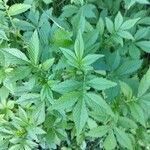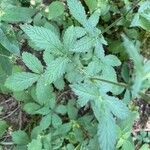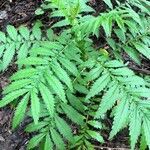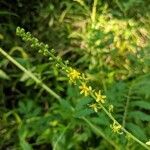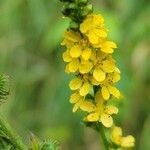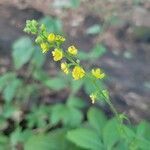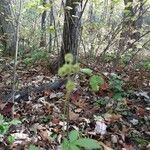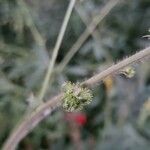Roots fibrous; stem stout, 5–15 dm, glandular and ± long-hirsute; stipules large and foliaceous, semicordate, 1–2 cm wide; principal lfls of the larger lvs 5–9, lance-ovate to elliptic or obovate, coarsely and often bluntly serrate, glabrous or nearly so above, beneath conspicuously glandular, sparsely hirsute chiefly or wholly on the veins; axis of the infl glandular, also hirsute with long spreading hairs; pedicels hirsute; hypanthium glandular only, or with a few short stiff hairs below, 3–5 mm at maturity, expanded above; bristles numerous in several rows; 2n=56. Moist or dry open woods; Me. to Ont. and Mont., s. to N.J., Ind., Kans., and in the mts. to Tenn. and N.C.; also in Calif. and N.M.
